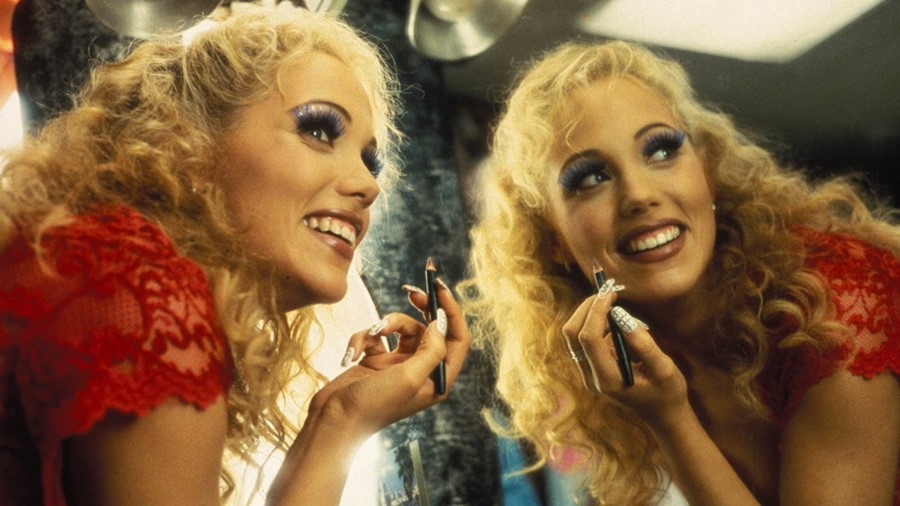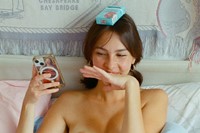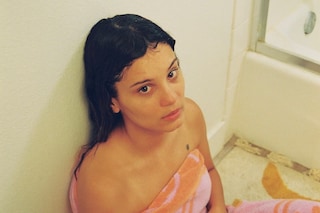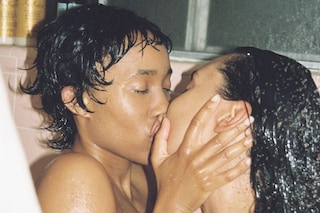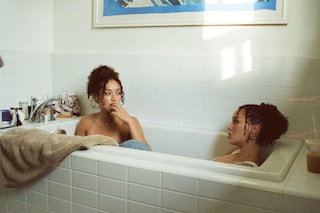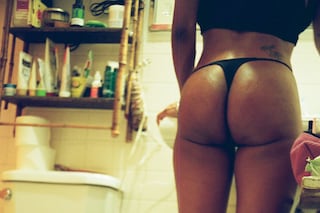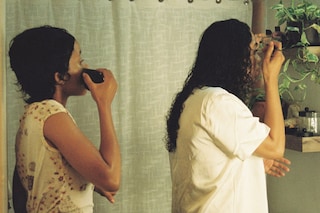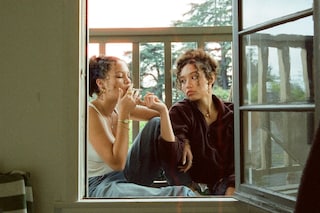In a world that often treats beauty as both a woman’s obligation and her currency, many are experiencing what can be described as beauty burnout – the exhaustion that comes from endless maintenance appointments, financial strain and the perpetual self-monitoring required to meet ever-evolving standards. But if beauty burnout is the diagnosis, what’s the cure? How do we move from exhaustion to enjoyment, from obligation to option, from burnout to balance and find joy in beauty again?
According to psychological theory, a key factor in burnout, and mental distress of any kind, is feeling a lack of control over one’s circumstances – what psychologists call an “external locus of control.” When we believe external forces dictate our choices and outcomes, we’re more likely to experience stress, anxiety, and ultimately, burnout. Beauty burnout is intrinsically connected to this lack of agency. Anne-Sophie Fluri, a published neuroscientist, explains: “When beauty rituals are driven by habit, expectation or social conditioning rather than genuine desire, it could be that the brain’s stress pathways are activated (rather than its reward circuits).”
This insight helps us understand why the beauty routines that once brought us joy can increasingly become sources of stress when they start to feel mandatory rather than chosen. But how much agency do we really have when it comes to beauty culture? Below are six ways to build beauty resilience and reclaim beauty as a collective, expressive and cultural practice – one that feels infinitely better than it looks.
BE MINDFUL
According to Fluri, one powerful way to transform beauty practices from obligations to enjoyable self-care is through mindfulness. “Research on mindfulness consistently suggests that being fully present and aware during habitual actions can reduce stress and rewire emotional response,” she tells me.
Rather than rushing through your skincare routine while mentally cataloging tomorrow’s tasks, try engaging fully with the sensory experience – the scents, textures and sensations. During this time, stay intentional about the products you’re applying, notice what feels laborious, what feels luxurious, and take the time to check in with yourself.
It is so easy to engage in ever-expanding routines when we’re on autopilot. When we take a step back, we often realise we don’t ‘need’ or even enjoy a lot of the practices that have become second-nature. Try taking time during your beauty practice to focus less on what looks good to others, and focus on what looks good to you. Beyond that, what feels good, smells good, sounds good and tastes good? Create a routine that feels nourishing in every sense, and return beauty to the realm of sensorial self-expression once more.
RECLAIM BEAUTY AS PLAY
Designer Stephie Irwin tells me she found the fun in beauty again by “playing with colours – coloured eye liner, fun lipstick,” while social media consultant Hatti Rex says she creates a “mad look just to sit inside or go to Morrisons”. Another interviewee gets ready with “nowhere to go”, adding “at least then I have hours to play with my make-up”. This distinction highlights how approaching beauty with playfulness rather than perfectionism creates space for joy.
Many women find freedom in reconceptualising beauty as creative self-expression rather than maintenance. As influencer Jess Bacon puts it, “Treat it as playing to find ways of self-expression!” Similarly, Rex found joy in “experimenting with new ways to use the products I already have in my make-up bag,” highlighting how creativity can transform existing routines. This shift from ‘maintaining’ to expressing aligns with psychological principles of intrinsic versus extrinsic motivation. When we act from intrinsic motivation – because an activity is inherently enjoyable – we experience greater satisfaction than when motivated by external pressure or rewards.
BUILD YOUR BEAUTY COMMUNITY
Perhaps one of the most powerful antidotes to beauty burnout is rediscovering beauty as a communal rather than solitary experience. As video essayist Elle Literacy told me, finding joy comes from “doing beauty things communally”. Similarly, another interviewee shares the delight of “glitter eyeshadow at concerts – I bring some for everyone to slap on their faces and we love it.” This communal approach transforms beauty from an isolating pressure into a shared celebration. Fluri confirms the psychological benefits: “One of the most protective factors against burnout, both in work and in life, is a strong social support network. When applied to beauty, this could mean reframing beauty as a shared and joyful experience rather than a solitary, perfection-driven task.”
CURATE YOUR DIGITAL ENVIRONMENT
Our digital diet profoundly influences our beauty expectations and self-perception. “We’d all benefit from reducing our exposure to hyper-idealised beauty content to help ‘recalibrate’ our perceptions of beauty,” suggests Fluri. “You could see this as similar to dopamine detoxing – reducing overstimulating digital content to reset your brain’s reward system.”
Although it takes additional labour to curate your digital world – having a nurturing environment that better represents how bodies and faces appear in the real world pays dividends. Artist Flora Deborah told me she found renewal by “forcing myself to look at unconventional beauty,” deliberately seeking out content that challenges mainstream beauty standards.
MAKE IT SUSTAINABLE
For some, the path to beauty resilience isn’t about finding new products or techniques but rather about thoughtful reduction – replacing short-term treatments with more sustainable beauty work, cutting back on appointments and leaning into a more natural look.
Beauty culture is a give and take, and though completely opting out may not be realistic or even desirable, thinking of beauty practice as a negotiation allows us to take some power back. By critically examining the bargains we make, we can confront what is in our control, assess how we’re utilising our agency and shift toward a more positive relationship with beauty – one that feels more liberating than laborious.
“Beauty burnout is not just a personal problem – it’s a cultural one,” Fluri acknowledges. “A world that relentlessly markets beauty as both a necessity and an investment will continue to breed this kind of exhaustion.” Yet within these cultural constraints, we can still carve out spaces of autonomy and joy. In the end, beauty resilience might be less about finding the perfect routine and more about finding your own relationship with beauty – one that acknowledges cultural pressures without being consumed by them, that makes room for play alongside purpose. Use one less product, try a new colour, experiment, play and be audacious. Take beauty culture back for yourself.



